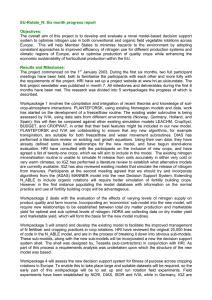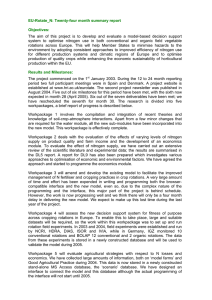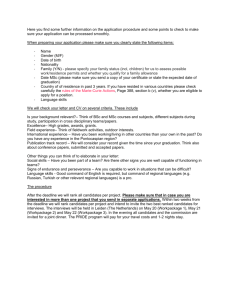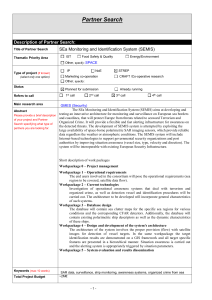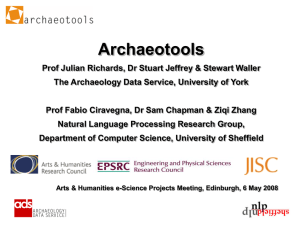EU-Rotate_N: Twelve month summary report Objectives:
advertisement
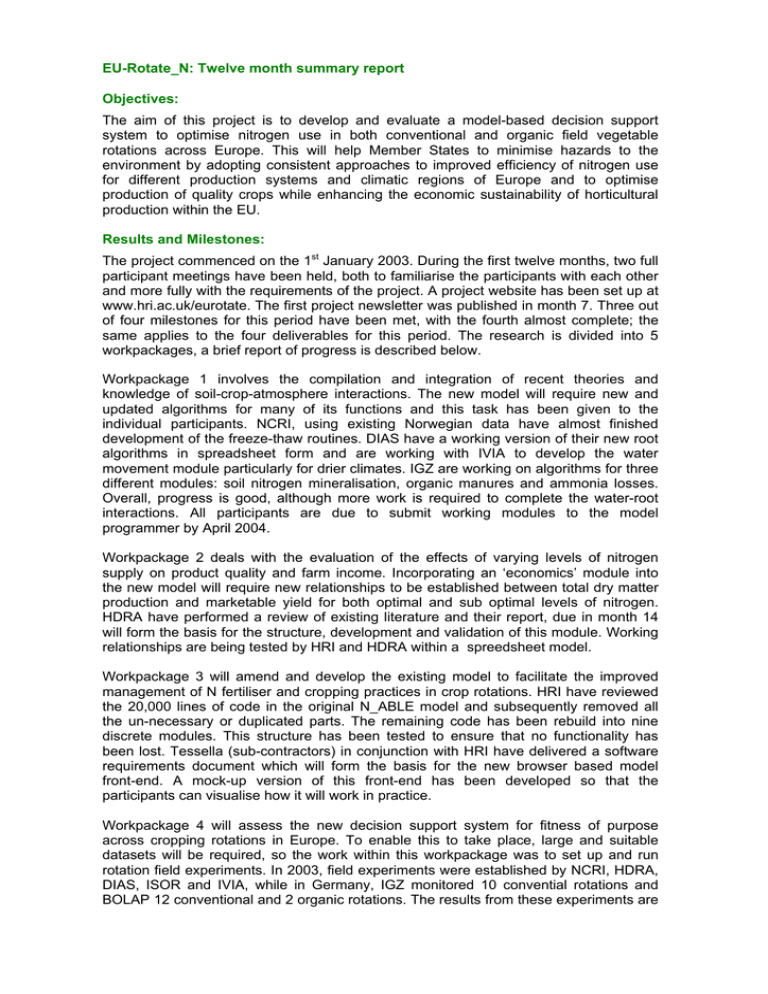
EU-Rotate_N: Twelve month summary report Objectives: The aim of this project is to develop and evaluate a model-based decision support system to optimise nitrogen use in both conventional and organic field vegetable rotations across Europe. This will help Member States to minimise hazards to the environment by adopting consistent approaches to improved efficiency of nitrogen use for different production systems and climatic regions of Europe and to optimise production of quality crops while enhancing the economic sustainability of horticultural production within the EU. Results and Milestones: The project commenced on the 1st January 2003. During the first twelve months, two full participant meetings have been held, both to familiarise the participants with each other and more fully with the requirements of the project. A project website has been set up at www.hri.ac.uk/eurotate. The first project newsletter was published in month 7. Three out of four milestones for this period have been met, with the fourth almost complete; the same applies to the four deliverables for this period. The research is divided into 5 workpackages, a brief report of progress is described below. Workpackage 1 involves the compilation and integration of recent theories and knowledge of soil-crop-atmosphere interactions. The new model will require new and updated algorithms for many of its functions and this task has been given to the individual participants. NCRI, using existing Norwegian data have almost finished development of the freeze-thaw routines. DIAS have a working version of their new root algorithms in spreadsheet form and are working with IVIA to develop the water movement module particularly for drier climates. IGZ are working on algorithms for three different modules: soil nitrogen mineralisation, organic manures and ammonia losses. Overall, progress is good, although more work is required to complete the water-root interactions. All participants are due to submit working modules to the model programmer by April 2004. Workpackage 2 deals with the evaluation of the effects of varying levels of nitrogen supply on product quality and farm income. Incorporating an ‘economics’ module into the new model will require new relationships to be established between total dry matter production and marketable yield for both optimal and sub optimal levels of nitrogen. HDRA have performed a review of existing literature and their report, due in month 14 will form the basis for the structure, development and validation of this module. Working relationships are being tested by HRI and HDRA within a spreedsheet model. Workpackage 3 will amend and develop the existing model to facilitate the improved management of N fertiliser and cropping practices in crop rotations. HRI have reviewed the 20,000 lines of code in the original N_ABLE model and subsequently removed all the un-necessary or duplicated parts. The remaining code has been rebuild into nine discrete modules. This structure has been tested to ensure that no functionality has been lost. Tessella (sub-contractors) in conjunction with HRI have delivered a software requirements document which will form the basis for the new browser based model front-end. A mock-up version of this front-end has been developed so that the participants can visualise how it will work in practice. Workpackage 4 will assess the new decision support system for fitness of purpose across cropping rotations in Europe. To enable this to take place, large and suitable datasets will be required, so the work within this workpackage was to set up and run rotation field experiments. In 2003, field experiments were established by NCRI, HDRA, DIAS, ISOR and IVIA, while in Germany, IGZ monitored 10 convential rotations and BOLAP 12 conventional and 2 organic rotations. The results from these experiments are being collated at the moment and will be entered into the newly constructed MS Access database with the next six months. Workpackage 5 will evaluate agricultural strategies with respect to N losses and economics. IGZ have reviewed the concept of optimising management practices and presented their findings to the second meeting. Discussions at that meeting defined the need for datasets from representative ‘model’ farms which could be scaled up region or country level. IGZ have developed a spreadsheet based data collection tool, which when complete will be transferred into a stand-alone MS Access database. Benefits and Beneficiaries: The decision support system is intended to benefit growers by allowing rotational planning and optimisation of nitrogen use efficiency, government policy makers on improving Codes of Good Agricultural Practice and key public bodies on developing more effective environmental protection measures Future Actions (if applicable): The next reporting period covers months 12 to 24. The main focus will be to complete and then validate all new algorithms and sub-modules so that they can then be incorporated into the new model. By the end of this period, the new browser based frontend will have been constructed, so that we can then combine the new model and the front-end and have a fully intergrated and working decision support system. We will finish collection of data on the effects of sub-optimal amounts of nitrogen on marketable production response curves. This will allow the economics module to be completed and validated. The results from the first years experimental crops will be assessed and the second years crops planted. In order that the new model can be used to test management scenarios, we will finish collecting data on ‘model’ farms and incorporate it into the model database. We will hold two meetings, the first in Spain in February and the second in Denmark in June. The website will continue to be updated and the second newsletter will be prepared and published 2
